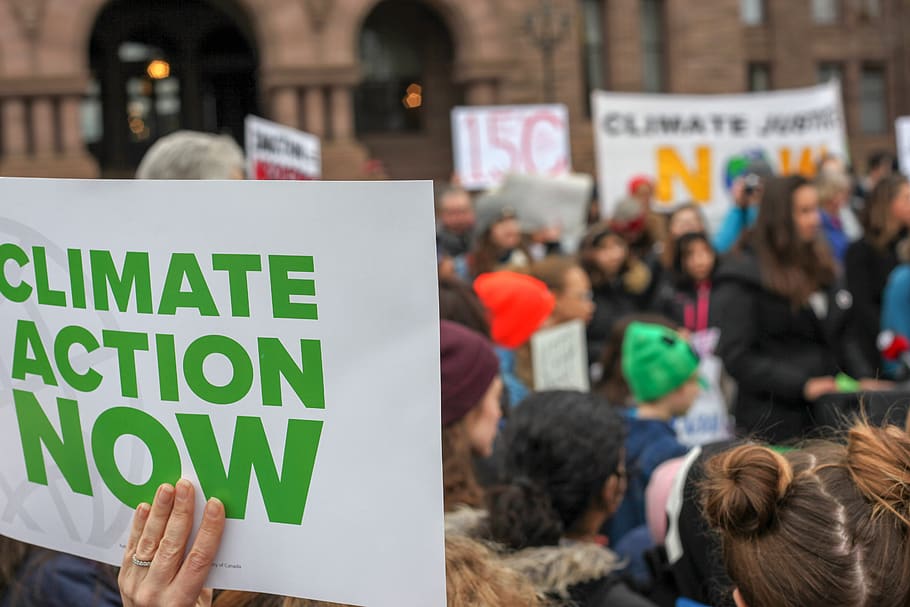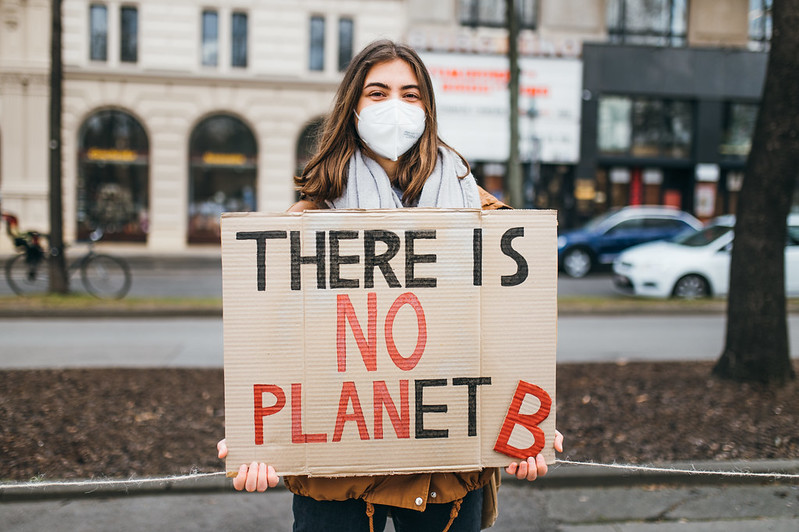
This blog was originally published by Ms. Magazine.
By Beth Roberts, Director, Center for Women’s Land Rights, Landesa
Women are underrepresented in climate leadership but hold the solutions for both people and planet.

We have long associated nature with femininity, referring to our planet as ‘Mother Earth’ and using evocative concepts like ‘fertility’ to describe her. But when it comes to meeting the challenges of climate change, it is overwhelmingly men holding the positions of power.
Women Are Sidelined in Conversations on Climate Change
Where are the women who should be leading this endeavor? The COP 26 summit, where actors coalesce to respond to the climate crisis, began on Oct. 31 and runs until Nov. 12. In part due to the requirements of the Gender Action Plan (GAP), female representation on constituted bodies under the UNFCCC (the UN body governing the COP) now averages 33 percent—still far from equal. Representation on delegations is often lower, especially among leadership positions.
Last year, the U.K. as host country fell under criticism for its COP 26 presidency team consisting of entirely men. It has since added some women to its team, but as has come to be standard practice, those in the positions of highest power remain men.
There is one day devoted to gender equality and climate action at COP 26 each year. This is commendable, but also underscores the challenge and goal of the GAP: Gender considerations must be infused throughout each session and every discussion.
If we want to turn the corner on the climate crisis, we need more than just a slow march toward the full and equal participation of women. When women’s insights and experiences are sidelined, we sideline half of our opportunities for innovation. Women must not just be represented; they must equitably occupy leadership positions.
The Climate Crisis Disproportionally Harms Women
The impacts of climate change are heavily gendered.
Climate change is associated with an increase in gender-based violence. Early marriage rates rise as families are faced with stark economic choices when food is scarce. Women typically bear the brunt of household chores like fetching water and firewood. As climate change degrades land and pushes those resources farther from homes, women and girls are at greater risk for assault and sex trafficking when they walk longer distances.
Tragically, women and girls are also more likely to die when climate-induced extreme weather events hit.

In a recent landmark decision, the U.N. Human Rights Council declared access to a clean, healthy and sustainable environment to be a human right. Women’s rights are human rights; they too deserve such an environment.
Women Are Pivotal to Fighting Climate Change
Inextricably linked to these disproportionate harms, women are also best positioned to fight climate change. In least developed countries, two out of every three women work in agriculture. Considering land management as a crucial component to slowing climate change, evidence shows when women are part of decision-making processes, more land is conserved. And countries with a greater number of female members of parliament are more likely to pass environmental treaties.
Women hold immense power to defend the planet from climate change as smallholder farmers, and also as global leaders.
Currently, women are doing a huge share of the work to fight climate change from both mitigation and adaptation angles. Women are active in conservation and sustainable use and management of natural resources, in addition to playing a large role in smallholder food production that contributes to soil regeneration. Yet women are often not equipped with the decision-making power to manage land, or to restore degraded land.
This is especially true of Indigenous women, who have been consistently and violently denied their rights for generations, both within their communities and by external forces.
Enable Female Climate Actors
Discriminatory laws and customs surrounding land rights hold women in a secondary social status relative to men and prevent them from accessing resources in their communities. These patriarchal limits hinder women socially, financially, and politically from local to global levels; we can see this now in the gender imbalance of leadership at COP 26.
We need women as leaders if we are going to survive the climate emergency. Gender justice takes hawkeyed intention and dedicated resources everywhere, from everyone, regardless of gender.
Women, and especially Indigenous women, should be primary decision-makers on climate action. We need women creating policies, engaging in negotiations, and determining how we use resources. We also need to commit to collecting sex-disaggregated data on the problem so we can respond more effectively.
For centuries, women and nature have been subjugated rather than respected. Finally, even the most stubborn among us are being confronted with the reality that we cannot exploit the earth—it is past time we realize the same is true for women. Let’s listen to the feminine voices at last and tackle the climate crisis.
